Memorable
Neurology
Jonathan Heldt, M.D.
Also available from the same author:
Memorable Psychopharmacology
Memorable Psychiatry
The content of this book is not intended to be a replacement for proper medical training, nor is it intended to substitute for professional medical advice, diagnosis, or treatment. Always seek the advice of your physician or other qualified health provider with any questions you may have regarding a medical condition.
Copyright 2019 Jonathan Heldt.
All rights reserved.
Revision 1.2. Last revised October 19, 2019.
ISBN: 0578520141
ISBN-13: 978-0578520148
DEDICATION
To Dr. William Hemmerlin . Thank you for showing me that anything is teachable
with the right combination of passion for the learner, dedication to the craft,
and ample servings of liquid nitrogen ice cream.
CONTENTS
Acknowledgments | i |
| Introduction | |
Neuroanatomical Foundations |
| The Nervous System | |
| The Cerebral Cortex | |
| The Cerebral Subcortex | |
| The Cerebellum | |
| The Brainstem | |
| The Spinal Cord | |
| The Peripheral Nervous System | |
| The Special Senses | |
| The Kitchen Sink | |
Clinical Applications |
| The Neurological Exam | |
|  Stroke Stroke
| |
|  Intracranial Pressure Intracranial Pressure
| |
| Myopathy | |
| Neuromuscular Junction Disease | |
| Motor Neuron Disease | |
| Movement Disorders | |
| Seizures | |
| Neoplasms | |
| Infections | |
| Demyelinating Diseases | |
| Peripheral Neuropathy | |
| Headache | |
| Neurocutaneous Disorders | |
| Final Review | |
ACKNOWLEDGMENTS
To Nick for keeping me happy, warm, and well fed while working on this book.
1 INTRODUCTION
 Before we begin, your author has something that he needs to disclose: he is not a neurologist . More than that, he doesnt even like neurology. Even on his best days, he finds the subject dense, tedious, and overly technical in a way that resists easy memorization and understanding. So what exactly makes him feel qualified to write a book on the subject when there are thousands of trained specialists that would be much more informed on the subject from whom you could learn?
Before we begin, your author has something that he needs to disclose: he is not a neurologist . More than that, he doesnt even like neurology. Even on his best days, he finds the subject dense, tedious, and overly technical in a way that resists easy memorization and understanding. So what exactly makes him feel qualified to write a book on the subject when there are thousands of trained specialists that would be much more informed on the subject from whom you could learn?
In short, this book is written for people who feel the same way. Because learning neurology can be a painful experience at times, this book liberally uses mnemonics, visual aids, practice questions, and a few spoonfuls of sugar to help everything go down. With that in mind, this book will be helpful mostly for people who need a basic understanding of the key concepts of neurology but wont necessarily be pursuing neurology at a higher level, including medical students, nurses, nurse practitioners, physician assistants, and doctors in other specialties like psychiatry and internal medicine. If you are in the process of becoming a neurologist or want to gain a deeper understanding of the field, this book can absolutely serve as a helpful starting point. However, you will likely want to supplement your learning from additional sources before heading out to begin a career as a clinical neurologist, reflex hammer in hand.
This book is divided roughly into two halves. The first half covers the anatomical foundations upon which neurology rests. Learning the basic neuroanatomy of both the central and peripheral nervous system is essential for understanding the diseases that you will see in neurology, so neuroanatomy is where we will begin. The second half of the book will take everything that youve learned about neuroanatomy and turn it on its head by showing the clinical pathology of what can go wrong. But wait! you might say. I dont want to wait until halfway through the book to learn about actual diseases! Fear not. This book takes an unapologetically clinical perspective throughout, with a focus on pathology from the very beginning. Even in early chapters, important information about relevant disease processes will be sprinkled throughout to allow you to immediately apply what youre learning.
 As you go through the book, you will soon realize that, when it comes to classifying neurologic disorders, there is often more than one way to slice the bread , meaning that many diseases will not fit neatly into a single category but rather will be classifiable in several ways. For example, GuillainBarr syndrome is a disease in which someones immune system attacks their own nerves by removing the protective sheath around them following an infection, leading to dysfunctional neuronal transmission in the peripheral nervous system. Does that make GuillainBarr syndrome an autoimmune disease? A demyelinating disease? A post-infectious disease? A peripheral neuropathy? The answer to all of these questions is, basically, yes . Because nature does not carve neatly at the joints, it is not always possible to neatly categorize its disorders into mutually exclusive chapters. However, rest assured that we will cover all the important major diseases in due time.
As you go through the book, you will soon realize that, when it comes to classifying neurologic disorders, there is often more than one way to slice the bread , meaning that many diseases will not fit neatly into a single category but rather will be classifiable in several ways. For example, GuillainBarr syndrome is a disease in which someones immune system attacks their own nerves by removing the protective sheath around them following an infection, leading to dysfunctional neuronal transmission in the peripheral nervous system. Does that make GuillainBarr syndrome an autoimmune disease? A demyelinating disease? A post-infectious disease? A peripheral neuropathy? The answer to all of these questions is, basically, yes . Because nature does not carve neatly at the joints, it is not always possible to neatly categorize its disorders into mutually exclusive chapters. However, rest assured that we will cover all the important major diseases in due time.
As you read, look for boxes like the one below to highlight the most clinically relevant information. If you are short on time, you can rapidly review the information by only looking at the boxes. Each box will also contain a memory aid to help you to get the information to stick. By design, some of the mnemonics and analogies may be silly, shocking, or amusing. This is done in service of making the information more accessible, as provoking an emotional response is a good way of getting information to stick. Nothing in this book is intended to stigmatize, trivialize, or humiliate anyone struggling with any of the disorders mentioned. Instead, the goal is to make the necessary clinical information more accessible to their healthcare providers.
Concepts in boxes are particularly high-yield ! An easy way to remember them will be in italics below. |
Before we begin, its worth pointing out that this book assumes that the reader is familiar with basic concepts from anatomy, physiology, and cell biology . Make sure that you have an introductory understanding of things such as action potentials, neurotransmitters, and hormones as well as a background in how various organ systems work, including the circulatory, respiratory, gastrointestinal, genitourinary, immune, endocrine, and musculoskeletal systems. If you feel rusty on any of these subjects, now is a good time to go back and do some reviewing on your own.
Next page
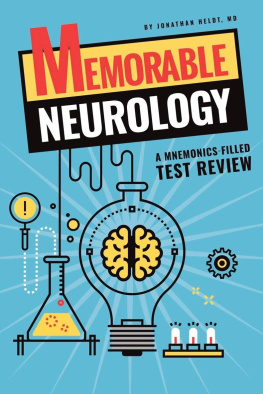
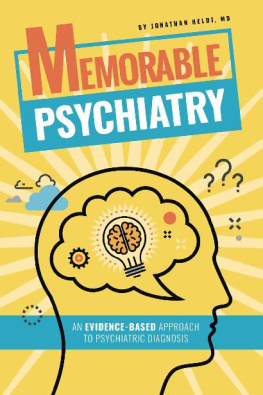
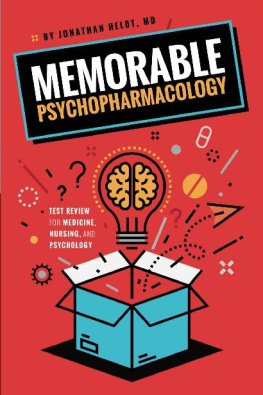

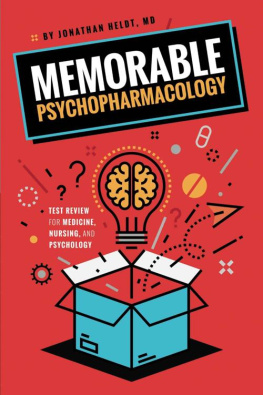

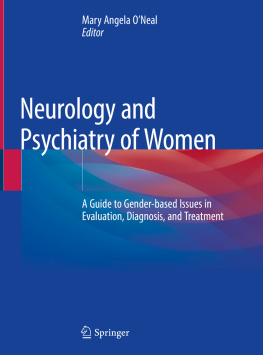
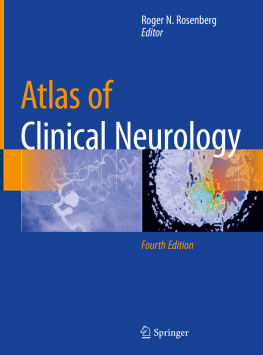


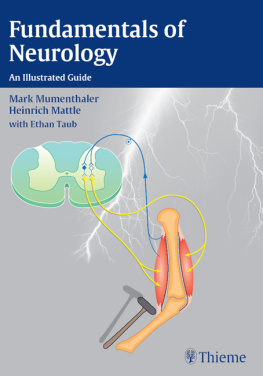

 Stroke
Stroke Intracranial Pressure
Intracranial Pressure Before we begin, your author has something that he needs to disclose: he is not a neurologist . More than that, he doesnt even like neurology. Even on his best days, he finds the subject dense, tedious, and overly technical in a way that resists easy memorization and understanding. So what exactly makes him feel qualified to write a book on the subject when there are thousands of trained specialists that would be much more informed on the subject from whom you could learn?
Before we begin, your author has something that he needs to disclose: he is not a neurologist . More than that, he doesnt even like neurology. Even on his best days, he finds the subject dense, tedious, and overly technical in a way that resists easy memorization and understanding. So what exactly makes him feel qualified to write a book on the subject when there are thousands of trained specialists that would be much more informed on the subject from whom you could learn? As you go through the book, you will soon realize that, when it comes to classifying neurologic disorders, there is often more than one way to slice the bread , meaning that many diseases will not fit neatly into a single category but rather will be classifiable in several ways. For example, GuillainBarr syndrome is a disease in which someones immune system attacks their own nerves by removing the protective sheath around them following an infection, leading to dysfunctional neuronal transmission in the peripheral nervous system. Does that make GuillainBarr syndrome an autoimmune disease? A demyelinating disease? A post-infectious disease? A peripheral neuropathy? The answer to all of these questions is, basically, yes . Because nature does not carve neatly at the joints, it is not always possible to neatly categorize its disorders into mutually exclusive chapters. However, rest assured that we will cover all the important major diseases in due time.
As you go through the book, you will soon realize that, when it comes to classifying neurologic disorders, there is often more than one way to slice the bread , meaning that many diseases will not fit neatly into a single category but rather will be classifiable in several ways. For example, GuillainBarr syndrome is a disease in which someones immune system attacks their own nerves by removing the protective sheath around them following an infection, leading to dysfunctional neuronal transmission in the peripheral nervous system. Does that make GuillainBarr syndrome an autoimmune disease? A demyelinating disease? A post-infectious disease? A peripheral neuropathy? The answer to all of these questions is, basically, yes . Because nature does not carve neatly at the joints, it is not always possible to neatly categorize its disorders into mutually exclusive chapters. However, rest assured that we will cover all the important major diseases in due time.